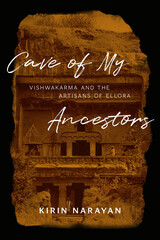9 start with A start with A
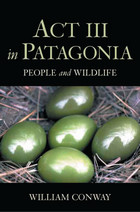
Patagonia. The name connotes the exotic and a distance that seems nearly mythical. Tucked toward the toe of South America, this largely unsettled landscape is among the most varied and breathtaking in the world-aching in its beauty as it sweeps from the Andes through broad, arid steppes to pristine beaches and down to a famously violent sea. It is also home to a vast array of rare wildlife as diverse and fascinating as the region itself.
Act III in Patagonia is the first book to take an in-depth look at wildlife and human interaction in this spectacular area of the world. Written by William Conway, former president of the Wildlife Conservation Society, the book is unique in its concentration on the long Patagonian shoreline--populated by colorful cormorants, penguins, elephant seals, dolphins, sea lions, and numerous species of whale--and an increasing number of human beings.
Threatened by overfishing, invasive species, artificially abundant predators, and overgrazing, the Southern Cone of Patagonia is now the scene of a little-known conservation drama distinguished by the efforts of a dedicated group of local and foreign scientists determined to save one of the Earth's least-inhabited places. From tracking elephant seals in the Atlantic to following flamingos in the Andes, Act III in Patagonia takes readers to the sites where real-life field science is taking place. It further illuminates the ecology of the region through a history that reaches from the time of the Tehuelche Indians known by Magellan, Drake, and Darwin to the present.
Conway has helped to establish more than a dozen wildlife reserves in South America and is thus able not only to tell Patagonia's history, but to address its future. He brings a wealth of knowledge about Patagonia and its wildlife and responds to the difficult questions of how the interests of humans and wildlife are best balanced. He tells of the exciting collaborations among the Wildlife Conservation Society and its national and provincial partners to develop region-wide programs to save wildlife in steppes, coast, and sea, demonstrating that, with public support, there is hope for this stunning corner of the world. Though singular in their details, the conservation efforts Conway spotlights are a microcosm of what is happening in dozens of sites around the world.
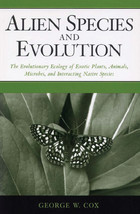
In Alien Species and Evolution, biologist George W. Cox reviews and synthesizes emerging information on the evolutionary changes that occur in plants, animals, and microbial organisms when they colonize new geographical areas, and on the evolutionary responses of the native species with which alien species interact.
The book is broad in scope, exploring information across a wide variety of taxonomic groups, trophic levels, and geographic areas. It examines theoretical topics related to rapid evolutionary change and supports the emerging concept that species introduced to new physical and biotic environments are particularly prone to rapid evolution. The author draws on examples from all parts of the world and all major ecosystem types, and the variety of examples used gives considerable insight into the patterns of evolution that are likely to result from the massive introduction of species to new geographic regions that is currently occurring around the globe.
Alien Species and Evolution is the only state-of-the-art review and synthesis available of this critically important topic, and is an essential work for anyone concerned with the new science of invasion biology or the threats posed by invasive species.
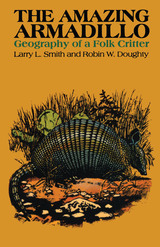
Perhaps no creature has so fired the imagination of a populace as the armadillo—that most ungainly, awkward, and timid little animal. Its detractors call it a varmint and wish it good speed from the Lone Star State and its other natural territories. But its supporters claim that it is the animal kingdom's representative of all that's truly Texan: tough, pioneering, adaptable, and generous in sharing its habitation with others. What is it that sets this quizzical little creature apart from the rest of the animal kingdom?
Larry L. Smith and Robin W. Doughty ably answer this question in The Amazing Armadillo: Geography of a Folk Critter. This informative book traces the spread of the nine-banded armadillo from its first notice in South Texas late in the 1840s to its current range east to Florida and north to Missouri. The authors look at the armadillo's natural history and habitat as well as the role of humans in promoting its spread, projecting that the animal is increasing in both range and number, continuing its ecological success in areas where habitat and climate are favorable.
The book also contributes to a long-standing research theme in geography—the relationship between humans and wildlife. It explores the armadillo's value to the medical community in current research in Hansen's Disease (leprosy) as well as commercial uses, and abuses, of the armadillo in recent times. Of particular note is the author's engaging look at the armadillo as a symbol of popular culture, the efforts now underway to make it a "totem animal" symbolizing the easy-going lifestyles of some Sunbelt cities, and the spread of the craze for armadilliana to other urban centers.
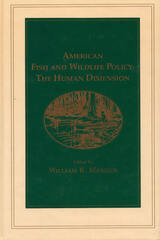
These eleven original essays by leading wildlife management and public policy scholars deal with policy issues, management perspectives, and the public attitudes about wildlife that shape the world of the wildlife manager.
Part 1 contains William R. Mangun’s introductory essay "Fish and Wildlife Policy Issues" and Daniel J. Decker et al.’s "Toward a Comprehensive Paradigm of Wildlife."
Ann H. Harvey’s "Interagency Conflict and Coordination in Wildlife Management," Philip S. Cook and Ted T. Cable’s "Developing Policy for Public Access to Private Land," and Debra A. Rose’s "Implementing Endangered Species Policy" make up part 2.
Part 3 consists of Cliff Hamilton’s "Pursuing a New Paradigm in Funding State Fish and Wildlife Programs" and Trellis G. Green’s "Use of Economics in Federal and State Fishery Allocation Decisions."
The fourth part includes James J. Kennedy and Jack Ward Thomas’s "Exit, Voice, and Loyalty of Wildlife Biologists in Public Natural Resource/Environmental Agencies"; Jean C. Mangun et al.’s "Nonconsumptive Wildlife-Associated Recreation in the United States"; and Barbara A. Knuth’s "Natural Resource Hazards: Managing to Protect People from the Resource."
In part 5, Joseph F. Coates looks to the future in "Public Policy Actors and Futures."
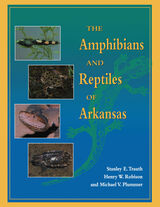
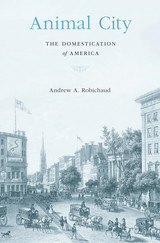
Why do America’s cities look the way they do? If we want to know the answer, we should start by looking at our relationship with animals.
Americans once lived alongside animals. They raised them, worked them, ate them, and lived off their products. This was true not just in rural areas but also in cities, which were crowded with livestock and beasts of burden. But as urban areas grew in the nineteenth century, these relationships changed. Slaughterhouses, dairies, and hog ranches receded into suburbs and hinterlands. Milk and meat increasingly came from stores, while the family cow and pig gave way to the household pet. This great shift, Andrew Robichaud reveals, transformed people’s relationships with animals and nature and radically altered ideas about what it means to be human.
As Animal City illustrates, these transformations in human and animal lives were not inevitable results of population growth but rather followed decades of social and political struggles. City officials sought to control urban animal populations and developed sweeping regulatory powers that ushered in new forms of urban life. Societies for the Prevention of Cruelty to Animals worked to enhance certain animals’ moral standing in law and culture, in turn inspiring new child welfare laws and spurring other wide-ranging reforms.
The animal city is still with us today. The urban landscapes we inhabit are products of the transformations of the nineteenth century. From urban development to environmental inequality, our cities still bear the scars of the domestication of urban America.
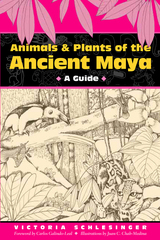
A growing interest in all things Maya brings an increasing number of visitors to prehistoric Maya ruins and contemporary Maya communities in Guatemala, Belize, El Salvador, western Honduras, the Yucatán Peninsula, and the southern areas of Chiapas and Tabasco, Mexico. For these visitors and indeed everyone with an interest in the Maya, this field guide highlights nearly 100 species of plants and animals that were significant to the ancient Maya and that continue to inhabit the Maya region today.
Drawing from the disciplines of biology, ecology, and anthropology, Victoria Schlesinger describes each plant or animal's habitat and natural history, identifying characteristics (also shown in a black-and-white drawing), and cultural significance to the ancient and contemporary Maya. An introductory section explains how to use the book and offers a concise overview of the history, lifeways, and cosmology of the ancient Maya. The concluding section describes the collapse of ancient Maya society and briefly traces the history of the Maya region from colonial times to the present.

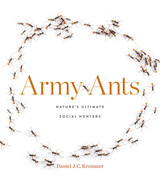
A richly illustrated, captivating study of army ants, nature’s preeminent social hunters.
A swarm raid is one of nature’s great spectacles. In tropical rainforests around the world, army ants march in groups by the thousands to overwhelm large solitary invertebrates, along with nests of termites, wasps, and other ants. They kill and dismember their prey and carry it back to their nest, where their hungry brood devours it. They are the ultimate social hunters, demonstrating the most fascinating collective behavior.
In Army Ants we see how these insects play a crucial role in promoting and sustaining the biodiversity of tropical ecosystems. The ants help keep prey communities in check while also providing nutrition for other animals. Many species depend on army ants for survival, including a multitude of social parasites, swarm-following birds, and flies. And while their hunting behavior, and the rules that govern it, are clearly impressive, army ants display collective behavior in other ways that are no less dazzling. They build living nests, called bivouacs, using their bodies to protect the queen and larvae. The ants can even construct bridges over open space or obstacles by linking to one another using their feet. These incredible feats happen without central coordination. They are the result of local interactions—self-organization that benefits the society at large.
Through observations, stories, and stunning images, Daniel Kronauer brings these fascinating creatures to life. Army ants may be small, but their collective intelligence and impact on their environment are anything but.
READERS
Browse our collection.
PUBLISHERS
See BiblioVault's publisher services.
STUDENT SERVICES
Files for college accessibility offices.
UChicago Accessibility Resources
home | accessibility | search | about | contact us
BiblioVault ® 2001 - 2024
The University of Chicago Press





